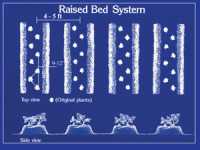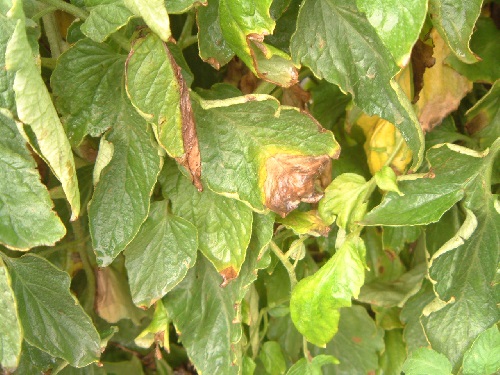Proven Production

Day-Neautral strawberries provide an opportunity to market fruit during the growing season when locally grown strawberries are normally not available. The fruiting season can be extended from five weeks, typical of June-bearing strawberries, to three to five months. Direct-to-consumer sales of day-neutral strawberries in the off-seasons of summer and fall can receive at least twice the price of June-bearing strawberries. However, growing day-neutral strawberries requires intensive practices, and challenges need to be minimized for optimal production and quality.
1. Start Small — Growers should start with small-sized plantings to determine optimal production practices, labor needs and resources, and market potential. Growing and marketing day-neutral strawberries fits well with other crops that have labor and resource requirements throughout the growing season, such as fresh-market vegetables.
Day-neutral strawberry plants differ from June-bearing plants by having the capability to produce flowers and fruits in both short- and long-day photoperiods. Yields are obtained over the growing season and are not concentrated like June-bearing plants. Compared to June-bearing strawberry cultivars, day-neutrals produce fewer runners and a higher number of crowns per plant. The fruit size of day-neutrals ranges from medium to large, and fruit flavor ranges from poor to excellent.
Over the past 20 years, we have completed research in Iowa demonstrating that day-neutral strawberries can be successfully grown in certain climatic conditions with proper production practices. High yields can be obtained (12,000 to 20,000 pounds per acre of marketable fruit), and not all fruit produced is marketable in some years. Primary challenges of obtaining marketable fruit include a smaller berry size of some cultivars and pest damage due to tarnished plant bug and fruit anthracnose. Also, high summer temperatures cause a delay of flowering and subsequent fruiting of day-neutral strawberries.
2. Maintain the Field — Plantings may be established with the goal of maintaining the field as annual plantings (dormant crowns set in the spring and the planting removed in the fall) or two-year old plantings (the planting is carried over for an additional year of production). Annual plantings are preferred because the larger first-year yield is shifted to the off-season months of late July, August, September, and October after setting the plants into the field in April.
If plantings are carried over for a second year of fruiting, yields are also obtained in the late springtime of the second year, when June-bearing strawberries are also fruiting, but the day-neutral fruit yields are not as high at this time as June-bearing cultivars. Growers might consider having both types of strawberries in their operation so that they may maximize having fruit available in larger quantities at each time of the year and for a longer season.
3. The Use of Crowns — Dormant crowns are set as early in the spring as the soil may be worked. High plant densities are used with 4 to 5 feet between the rows and 9 or 12 inches between dormant crowns within the rows. Crowns are typically planted as double rows on a raised bed covered with soil mulch.
The distance between double rows and between plants within each row is 9 or 12 inches. A planting system of 5 feet between rows and 12 inches between plants with double rows uses about 17,000 plants per acre.
A raised bed is used to improve internal soil drainage and create easier harvesting conditions. Trickle irrigation is established down the center of the double-row bed to provide supplemental watering and injecting fertilizer.
4. Mulch for Moisture — A soil mulch is used to maintain soil moisture, control weeds on the raised bed, reduce possible fertilizer leaching from excessive rainfall, reduce fruit rots and soil splash on the fruit, and cool the root and crown region of the plant’s growing environment.
Cooling of the midsummer soil temperature is critical for strawberry flower production. Polyethylene mulch or straw mulch may be used as soil mulch because these mulches create significantly cooler soil temperatures in midsummer in Iowa. Straw mulch maintained at 2 to 3 inches or white-on-black colored polyethylene mulch can be used to reduce soil temperature.
5. Selecting a Cultivar — Cultivars that are adapted to Iowa include many of the day-neutral selections available through nurseries. Most of our research has focused on Tristar, Tribute, and Seascape. Tristar and Tribute have excellent fruit flavor, disease resistance, and good yields. Tribute fruit size is larger than Tristar fruit. Seascape has fruit that is sweet,
produces medium yields, and has very large fruit compared to Tristar and Tribute. Growers should try several cultivars on their farms to determine those that are best adapted and should experiment with new cultivars as they are released.
6. Production Practices — Day-neutral production practices include hand labor. An additional management practice that needs to be accomplished to obtain optimal production is flower removal for the first 10 weeks after planting to aid in plant establishment. All flowers formed after 10 weeks may be kept for the first yields.
Also, runners should be removed from the strawberry plants throughout the growing season to create larger single plants with multiple crowns and higher yields. Soil structure and fertility should be determined prior to establishing the field. Full-grown day-neutral strawberry plants use 7 pounds of nitrogen per acre per week. Nitrogen may be applied through the trickle irrigation system.
7. Putting Pests in their Place — Pest management includes those pests that are typical for June-bearing strawberries. Special attention should be given to tarnished plant bug and fruit anthracnose control. Because the season is longer, tarnished plant bug populations can increase to potentially damaging levels. Fruit anthracnose can be a problem in some years because day-neutral fruit are present during the warmer temperatures of midsummer that favor anthracnose development.
Weeds are typically controlled in the row by the soil mulch, and weeds can be controlled in the planting hole by herbicide, hand-weeding, or using pieces of polyethylene mulch as a collar around the planting hole. Weeds can be controlled between rows by planting a cover crop and mowing it throughout the season if needed, spreading a 2- to 3-inch layer of straw mulch.









